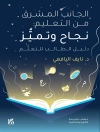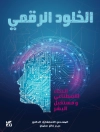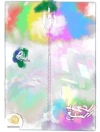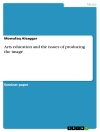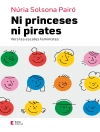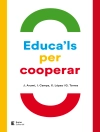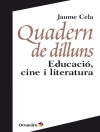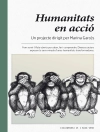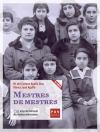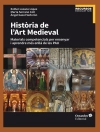Based on over a decade of collective teaching, this volume explores the hybrid use of online and in-person collaboration as a means of offering international experience to university-level arts students. Chapters articulate a collective learning based on the experiences of the International Art Collaborations Network (INTAC), Collective Body group and related programs which the authors and contributors have participated in as educators and students.
Illustrated with photographs, screenshots and student projects, the book inspires reflection on teaching methodologies and student artmaking strategies across cultures and languages. Pedagogical and methodological topics trace an evolution of curricular approaches and use of evolving online platforms. Examples of themes and visual strategies demonstrate the power of student-directed collaborative learning. Diverse voices have been gathered through research conducted with educators and alumni connected to INTAC, providing perspectives on working collaboratively in a global context.
Student projects exemplify responses to the challenges of communication and creation that come with distanced artistic partnership. Chapters end with suggested points for conversation, whether between educators, students of art education or students entering collaborations. Although based on experiences in the visual arts, the ideas and methods are applicable to others engaging in inter-institutional education or online collaborative practices.
Fully illustrated with examples of collaborative art projects, photographs, screenshots, diagrams and posters.
İçerik tablosu
Acknowledgements
About this Book
Circles of Engagement
A Brief History
Finding Possibilities
Developing a Programme
Reviewing the Decade
The Importance of Global Connections
Situating the International in Art Education
Cultural Diversity and Global Awareness
Collaboration as a Key
‘Catalyzing Change’
Dr. Juha Suonpää, TAMK (Finland)
Questions and Challenges (2)
Enabling Interaction
Coming to Collaboration
‘Contemporary and Historical Models: Virtual art collaborations, artistic collectives, and exchanges across borders’
Giselle Mira-Diaz (INTAC)
‘Collective Body 2008–2020’
Prof. Patricia Azevedo UFMG (Brasíl) and
Prof. Clare Charnley LBU (UK)
Questions and Challenges (3)
Key Ground Rules
Preparing Students for Collaboration
Modes of Speaking
Facilitation: Following the student process
Questions and Challenges (4)
Organic Networking
Short-Term Projects
Intensives
Workshop Travel
Extending Engagements
The INTAC Model
Shared Events
Questions and Challenges (5)
A Broader Conception of Teaching
Enabling Student Experience
Why do faculty do it?
‘Why INTAC Participants DO Activate their Cameras?: The Importance of Collaboration in Emancipatory Education’
Prof. Sofía Sienra Chaves, UAEMex (Mexico)
‘Trusting the Process’
Prof. Meera Margaret Singh, OCADU (Canada)
‘poetry of transience’
Prof. Walter Bergmoser, UE (Germany)
Questions and Challenges (6)
Institutional Support
Barriers
Inter-institutional Territories
Complex Diversity
Working with Matched Partnerships
Questions and Challenges (7)
Defining Thematics
Arriving at Meaningful Projects
Global Themes
‘Let’s think about the journey of bananas’
Phuong Hoang, RMIT (Vietnam) / UE (Germany)
Questions and Challenges (8)
How Different is Difference?
Understanding Difference
Working Across Languages
Visual Language
Diverse Learning Environments
Building Bridges
Considerations of travel
‘Metaverse & INTAC: The Dilemma & Breakthrough of Chinese Students’
Dr. Liu Fan, WTU (China)
‘Art Over Language’
Prof. Silas Fong, CAU (South Korea)
Questions and Challenges (9)
Student Voices
Motivations
Challenges for Collaboration
Alumni Recommendations
Learning Outcomes
Alumni Interviews
Participant Manifesto: Ground Rules
for Collaborators
Questions and Challenges (10)
Approaches to Collaborative Artmaking
Experiments in a Digital World
Collaborative Strategies
The Physical–Virtual Interface
Threads Between Partners
‘Second on the Right and Keep on Going…’
Prof. Patricia Azevedo, UFMG (Brasil) and
Prof. Clare Charnley, LBU (UK)
The Impact of Meeting
Exhibitions
Workshops and Debriefing Sessions
Social and Cultural Activities
Inhabiting the Online Space
Transitioning to Virtual Presentation
Animating the Virtual Exhibition Experience
INTAC on Kunstmatrix.com
A Decade of Evolving Online Options
Meaningful Virtual Interaction
Negotiating Online Platforms
Selecting Workspaces
Platform Options
Acceptance of Online Platforms
Ensuring Dynamic Online Spaces
Online Activities
Student Agency in Online Channels
The Question of Visibility
It’s about the communication
Questions and Challenges (15)
An Expanded Vision
A Sustainable Scenario
Expanding Collaborative Networks
Questions and Challenges (16)
Appendices
Appendix A – Key Alumni Survey Data
Appendix B – Chronologies
Partners
Notes on Authors and Contributors
List of Figures
Index
Yazar hakkında
Peter Sramek has taught at the OCAD University in Toronto since 1976.


